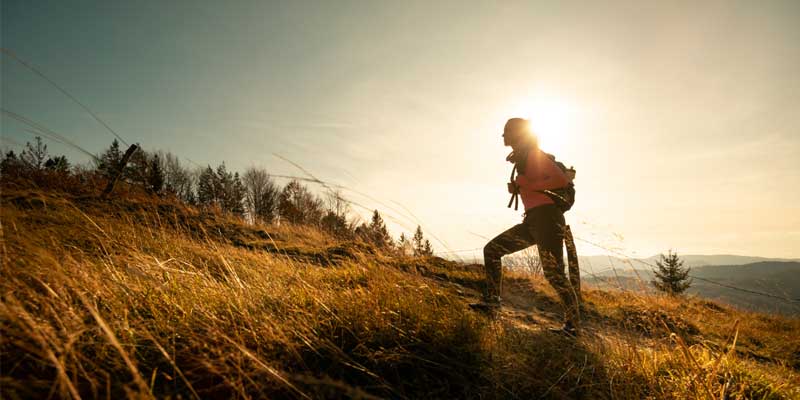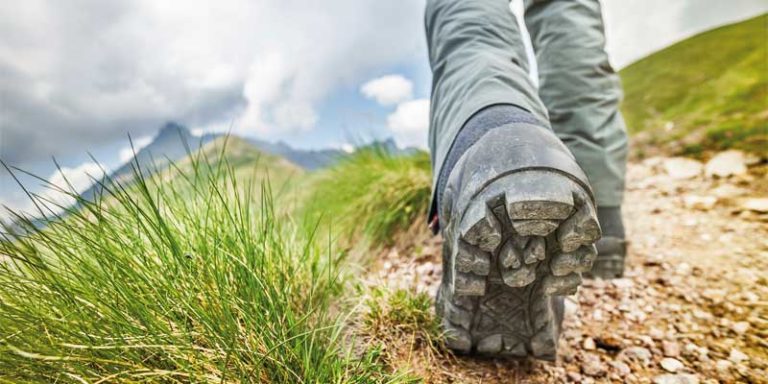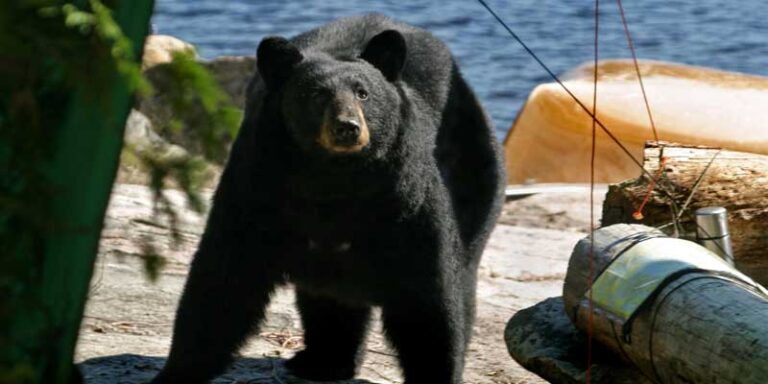Hiking doesn’t have to be a summer activity. As long as you dress appropriately, there is nothing to stop you from hiking at any time of year. In 55-degree weather you’ll need to wear more than just some shorts and a T-shirt but what exactly should you wear? Here we take a closer look at what to wear hiking in 55-degree weather.
At 55 degrees, you want to find the balance of keeping warm without overheating and sweating. To do that, it’s best to wear a lightweight shirt along with a fleece mid-layer. You can also have a rain jacket on standby in your backpack. A quick-drying pair of long pants would be best and you can complement that with wool socks.
An Overview
- Head and hands: Hats and gloves probably won’t be required in this climate but it may be a good idea to pack a pair if the temperature drops.
- Upper body: Wear a moisture-wicking base layer, and an insulating mid-layer and pack away a lightweight jacket for bad weather.
- Lower body: Wear quick-drying and moisture-wicking pants.
- Underwear: High-quality woolen underwear and socks will keep you comfortable without overheating.
- Feet: It’s always a good idea to wear a great pair of hiking boots/shoes.
Layer Properly
To make your hiking experience more enjoyable, layer properly according to the weather conditions.
Baselayer
Baselayers are vital as they are going to be what is touching your skin. You need them to regulate your temperature and keep you comfortable on your hike. It needs to wick moisture away from your skin and be breathable.
The reason for that is a cotton base layer, for example, will trap in your sweat and cause you to overheat when it gets warm. Conversely, when the temperature drops further, this sweat can make you cold and uncomfortable. Cotton also dries extremely slowly.
Synthetic moisture-wicking material will keep you insulated and will allow your sweat to escape. The great natural material is merino wool as this will still keep you insulated even when damp. It’s also a good option for socks and underwear. Some companies also make fabrics that are synthetic and wool blends.
So your upper base layer should be a long or short-sleeved shirt (depending on your preference and how you feel the cold) that has the moisture-wicking ability. This will give you a great foundation for the rest of your clothing.
Pants
Shorts may be an option for summer hikes but they aren’t a great idea in 55-degree weather. Not only do pants give you insulation but they can also protect your legs from any stings/scratches from plants and insects.
There are several features that you want from your hiking pants. They should be lightweight, durable, quick-drying, and moisture-wicking. It’s a set of features that many cheaper pants fail on which is why it’s a good idea to get a model which is hiking-specific.
Jeans, for example, shouldn’t be worn. Sure, they’re highly durable but they aren’t very flexible and are awful to wear when wet. A synthetic material such as nylon or polyester often has the best blend of qualities to give you excellent hiking performance.
Depending on how you feel about the cold, you also may want to opt for a base layer of pants that will give you extra insulation. For most people, these won’t be required in 55-degree weather.
If you are going to be in wet conditions then rain pants can be a good idea. You can wear these over your regular pants to give you a waterproof barrier while it’s raining. They are often lightweight and can be easily packed away when it’s dry.
Mid-Layer
For many people, the ‘middle layer’ will be the only other layer they have in 55-degree weather. The purpose of this layer is simply to retain your body heat and keep you insulated. Even though it doesn’t touch your skin, it’s still a good idea to stay away from cotton.
I would recommend a polyester fleece jacket as that will give you the best range of qualities. It will be quite light while still being able to keep your body warm. You can also loosen the zipper if you start feeling a little hot.
Fleece is available in different levels of thickness so you can opt for something a bit thicker if you don’t like being out in the cold. Fleece jackets also tend to be fairly compact so you can always take them off and pack them away should you get hot.
For fall, you shouldn’t need an insulating layer such as a down jacket or vest. This, however, may be a good option to carry if there is a risk of the temperature quickly dropping below 55 degrees, such as hiking towards the end of the day.
Outer Layer
In 55-degree weather, you won’t need your outer layer to give you much warmth as that will be covered by the rest of your layers. If you have a thick hiking jacket in this weather then you can quickly overheat and sweat too much.
You should only need this jacket when it’s particularly windy or if it’s raining. It will prevent the wind from cutting through your clothing and cooling you down and act as a waterproof barrier to keep the rest of your layers dry.
You must wear a jacket that is lightweight and easy to pack away. It’s going to be there for when weather conditions worsen rather than being a permanent layer. You want to be easy to pack without wearing too much space.
Prepare for the Worst
Hiking in the fall is comfortable for most people but you should always know your climate. In some areas, there can be a significant temperature drop after a certain time in the day. Some places can quickly switch from being sunny to raining in no time at all.
It’s always a good idea to prepare for the worst possible conditions and pack accordingly. If anything changes, you’ll want to stay dry and comfortable. Hopefully, this guide has given you all the info you need to have a great hike.



